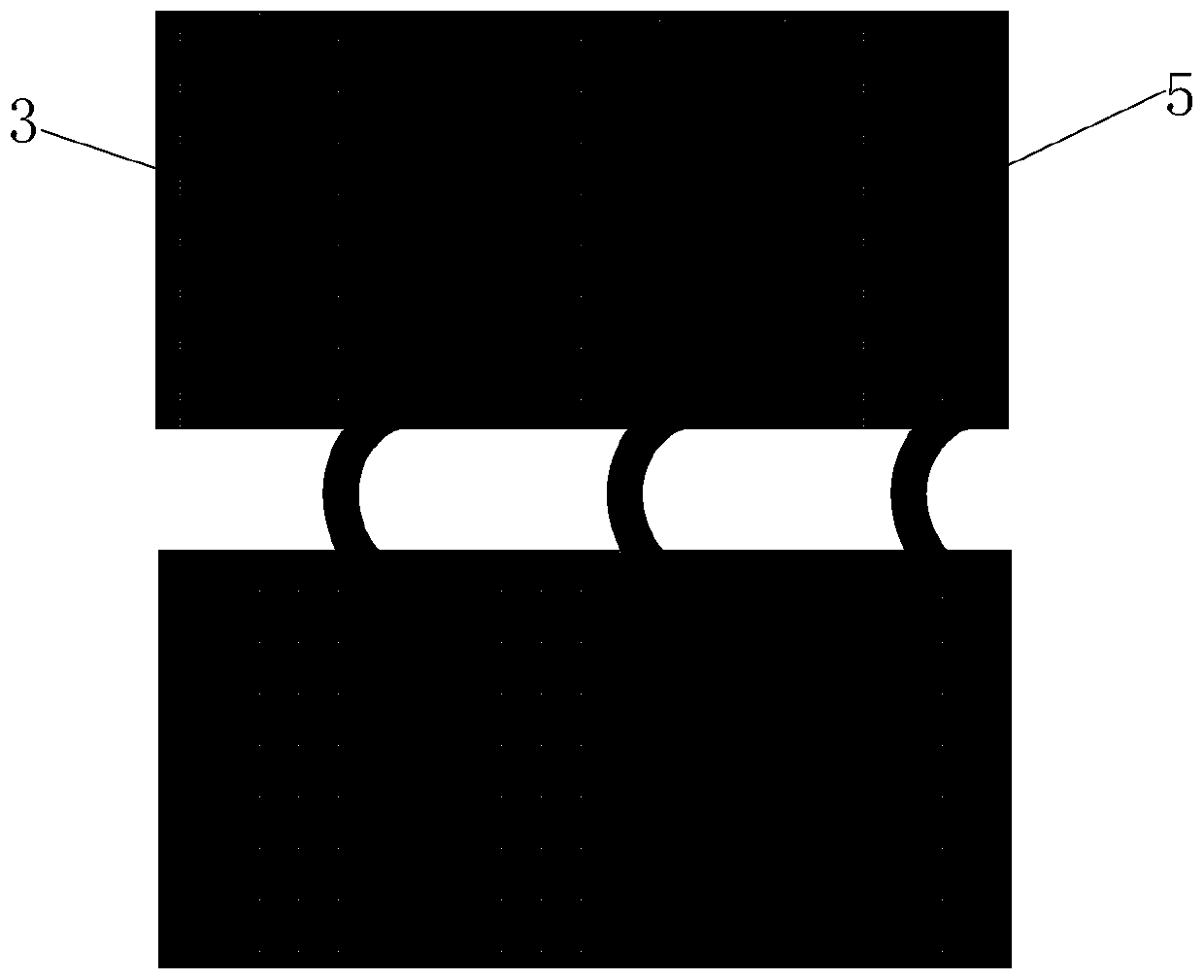Photovoltaic module for polar environment
A photovoltaic module and environmental technology, applied in photovoltaic power generation, photovoltaic modules, electrical components, etc., can solve problems such as inconsistent thermal expansion coefficient, low power generation efficiency, and affecting power generation of photovoltaic modules, and achieve low glass transition temperature and embrittlement temperature, Reasonable working method and simple overall structure
- Summary
- Abstract
- Description
- Claims
- Application Information
AI Technical Summary
Problems solved by technology
Method used
Image
Examples
Embodiment Construction
[0026] The present invention will be further described below in conjunction with the accompanying drawings and specific embodiments.
[0027] Such as Figure 1 to Figure 3 As shown, the photovoltaic module used in the polar region environment of this embodiment includes a double-sided power generation solar cell 3 that is encapsulated and protected by an encapsulant 2 on both sides. Both sides of the cell 3 can generate electricity, and both sides of the cell 3 The front glass layer 1 and the rear glass layer 4 are respectively provided to protect both sides of the battery sheet 3; the inside of the front glass layer 1 is provided with a heating module 7 for heating the front glass layer 1; the heating module 7 and the photovoltaic module The controller is connected; when the controller detects that the power generation of the front side of the battery sheet 3 is lower than that of the back side, it can judge that there is snow on the front glass layer 1. At this time, the hea...
PUM
| Property | Measurement | Unit |
|---|---|---|
| Diameter | aaaaa | aaaaa |
Abstract
Description
Claims
Application Information
 Login to View More
Login to View More - R&D
- Intellectual Property
- Life Sciences
- Materials
- Tech Scout
- Unparalleled Data Quality
- Higher Quality Content
- 60% Fewer Hallucinations
Browse by: Latest US Patents, China's latest patents, Technical Efficacy Thesaurus, Application Domain, Technology Topic, Popular Technical Reports.
© 2025 PatSnap. All rights reserved.Legal|Privacy policy|Modern Slavery Act Transparency Statement|Sitemap|About US| Contact US: help@patsnap.com



